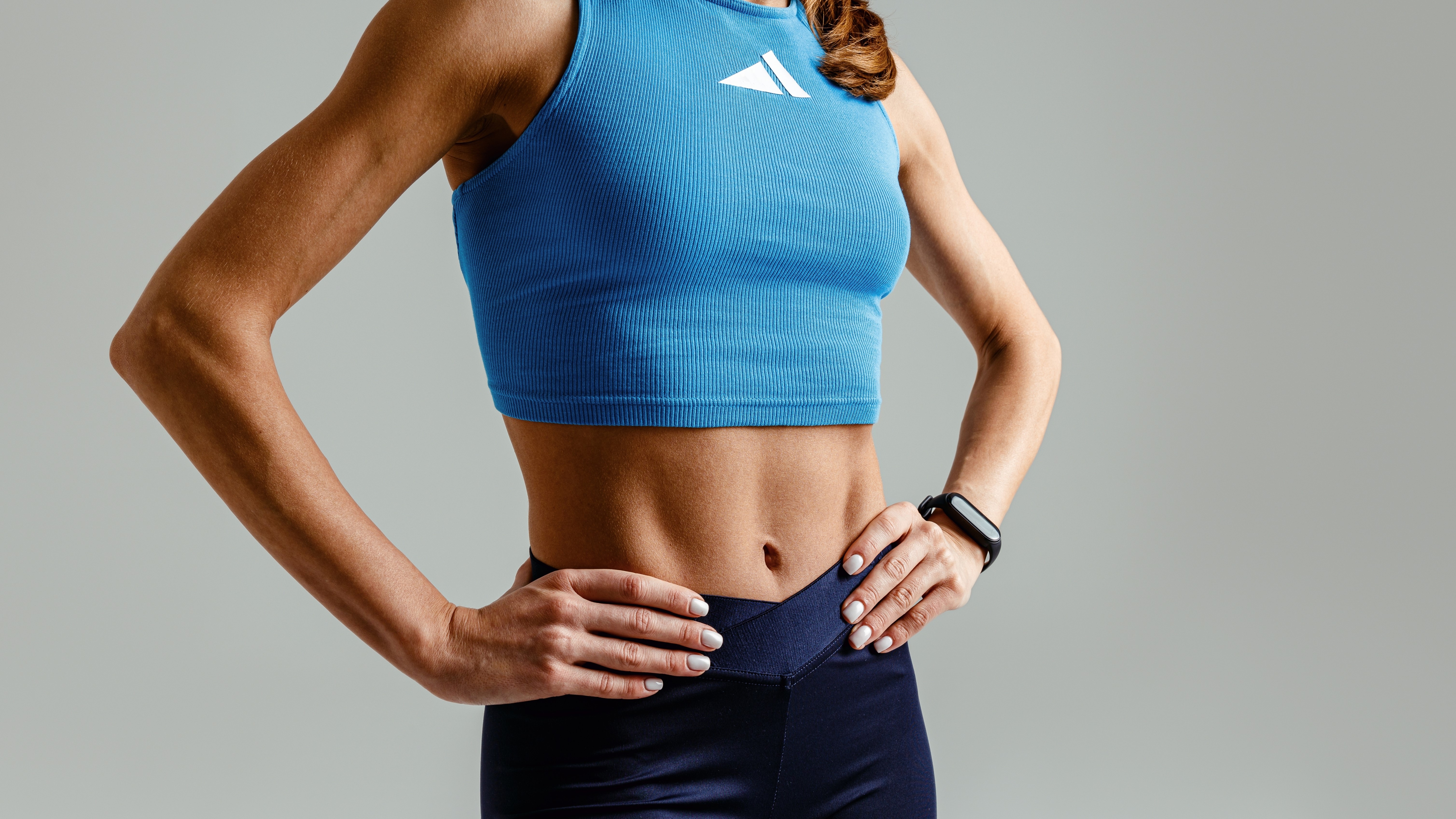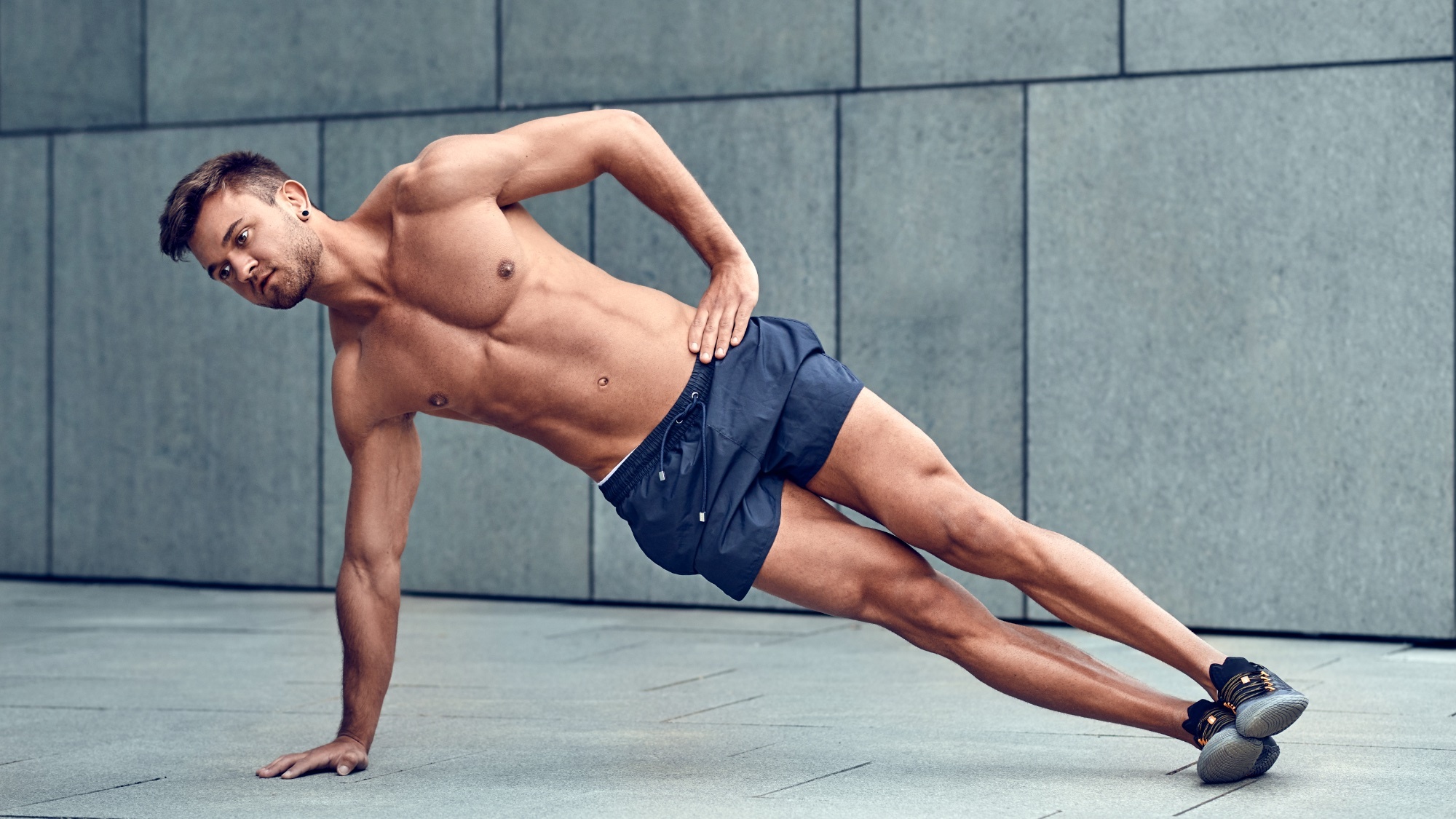
Getting abs takes time and effort, so wouldn’t it be convenient if one exercise alone could sculpt toned and visible abs? Known as a compound exercise, the plank targets multiple core muscles at once and fires up your glutes, quads, hamstrings, shoulders and arms, leading to a stronger body all over — but does performing planks every day build abs?
Below, I explain what it really takes to chisel out core muscles, and why the plank still deserves a place in your exercise routine for more reasons than just aesthetics.
Abs vs core muscles: What’s the difference?

First and foremost, let’s differentiate between abs versus core muscles; when people mention the abs, they mean the six-pack muscles, also referred to as the rectus abdominis. These muscles sit along the front of your stomach, and because they are closer to the surface than your deeper, stabilizer muscles, when visible, you can see that lean six-pack look.
Then there are all the other core muscles that, together, stabilize your torso, including your spine and hips, and help you move properly while preventing injury. A strong and stable core will help you perform daily tasks better and improve exercise performance while bulletproofing against injuries.
Can you get abs if you plank every day?
The golden question: Do planks build abs? The question most people mean is: Do planks build visible abs? Sadly, no, they don’t — not as a standalone exercise, anyway.
Planks are a brilliant addition to your exercise routine and can help you work on core activation and the mind-muscle connection because you’ll be focusing on squeezing relevant muscle groups to hold the isometric (non-moving) position. For most people, planks are also low-impact and can be performed from the knees to help protect the lower back.
Planking also works the deeper core muscles that help stabilize your torso, which can help improve overall core strength and stability. However, planks only work the muscles in one way: through non-moving contraction. As I mentioned, you have multiple core muscles, so to target them, you need to move in different ways, like flexing or extending, moving side to side, or rotating; this is known as the planes of motion. The abs in particular respond to flexion-extension exercises like knee raises or sit-ups.
Get instant access to breaking news, the hottest reviews, great deals and helpful tips.
So, while planks can build ab strength, the exercise alone won't get you the abs look.
You have multiple core muscles, so to target them, you need to move in different ways.
Developing rock-solid abs is one thing, but how visible your abs are is another. This comes down to body fat percentage and the amount of midsection fat you carry on your body. How you store fat can relate to diet, genetics, lifestyle factors like sleep and stress and the type of exercise you do. For some people, shifting abdominal fat can be incredibly hard work, even if they have strong abs beneath and exercise often.
Finally, doing the same exercise every day might work for some people, but as a trainer, I try to remind clients that giving the body a rich mix of activity can help prevent injury from overtraining a muscle group. Resting is also crucial for muscle growth and repair, and keeping your muscles challenged is what helps them to grow and get stronger.
How long should you hold a plank for?

My colleague investigated how long to hold a plank for, and it seems the consensus is that even just 10 seconds is enough if you perform the exercise with proper form and practice the mind-muscle connection (squeezing and activating muscles consciously).
A few sets of 10 seconds might not seem like much, but it could be more effective at strengthening your core than several minutes performed with poor form. That’s not to say holding for longer doesn’t benefit you; building a plank hold for up to several minutes will test your core endurance.
You could also play with timing and different plank variations, performing several sets at varied intensities. One plank I find most effective is called the RKC plank, which is notoriously difficult to hold for more than 20 seconds at a time.
During the RKC, you’ll focus on “dragging” your feet and elbows toward each other while squeezing as many muscle groups as possible without actually moving. If form and activation matter to you, this is the one to try for less time.
Think intensity and focused effort over time, and you’ll build a stronger core in no time.
Follow Tom's Guide on Google News to get our up-to-date news, how-tos, and reviews in your feeds. Make sure to click the Follow button.
More from Tom's Guide
- The 8 best core workouts to build stronger abs and boost your balance without weights
- New study says the 'one-set rule' could help you build more muscle in the gym (while doing less) — here's how
- I biked 13 miles with the Apple Watch Ultra 2 vs Samsung Galaxy Watch 8 — and there's a clear winner

Sam Hopes is a level 3 qualified trainer, a level 2 Reiki practitioner and fitness editor at Tom's Guide. She is also currently undertaking her Yoga For Athletes training course.
Sam has written for various fitness brands and websites over the years and has experience across brands at Future, such as Live Science, Fit&Well, Coach, and T3.
Having coached at fitness studios like F45 and Virgin Active and personal trained, Sam now primarily teaches outdoor bootcamps, bodyweight, calisthenics and kettlebells.
She also coaches mobility and flexibility classes several times a week and believes that true strength comes from a holistic approach to training your body.
Sam has completed two mixed doubles Hyrox competitions in London and the Netherlands and finished her first doubles attempt in 1:11.
You must confirm your public display name before commenting
Please logout and then login again, you will then be prompted to enter your display name.
